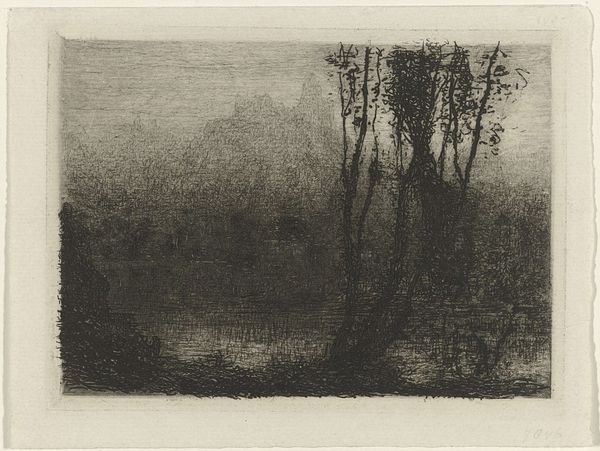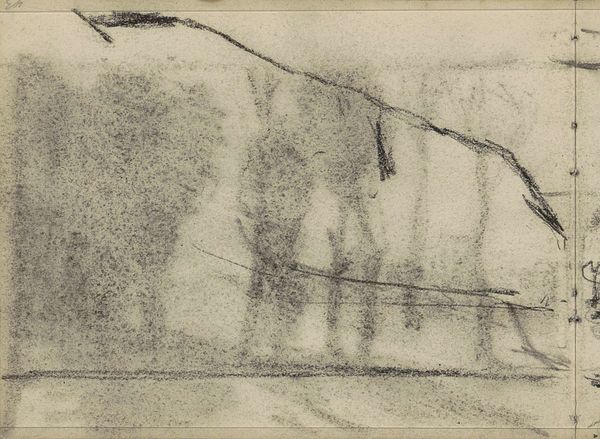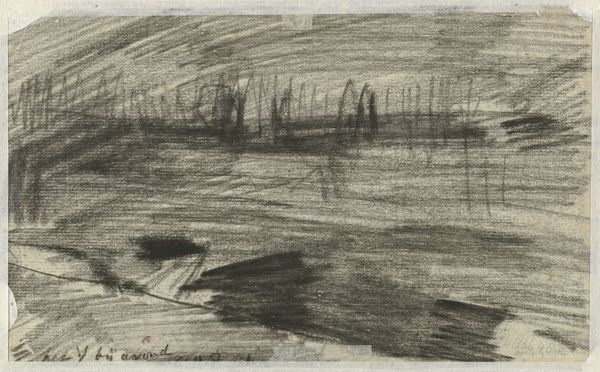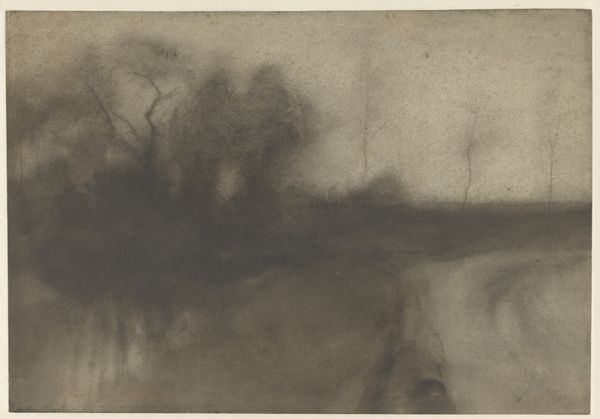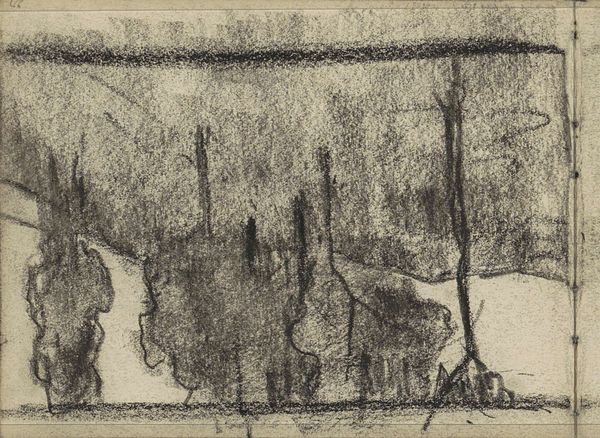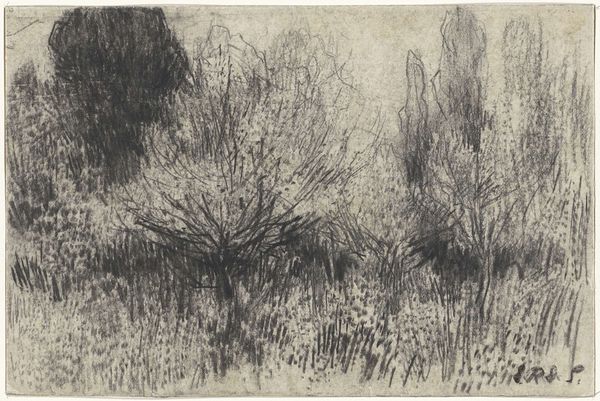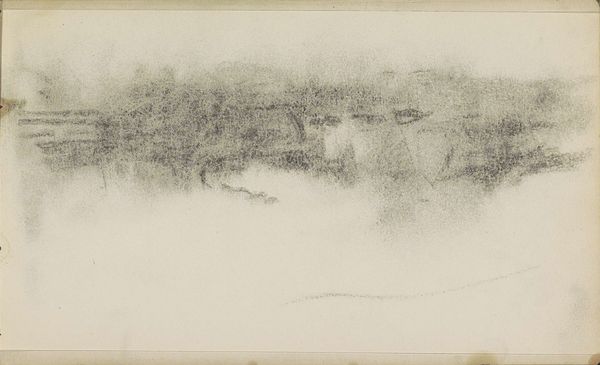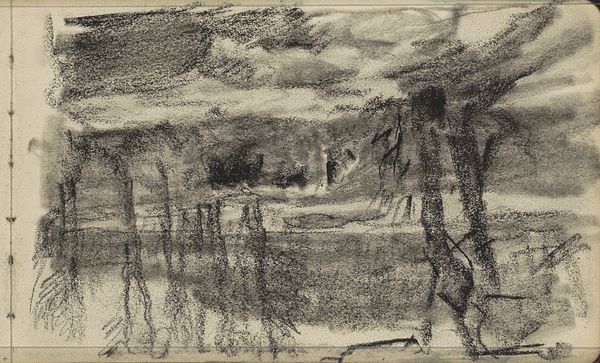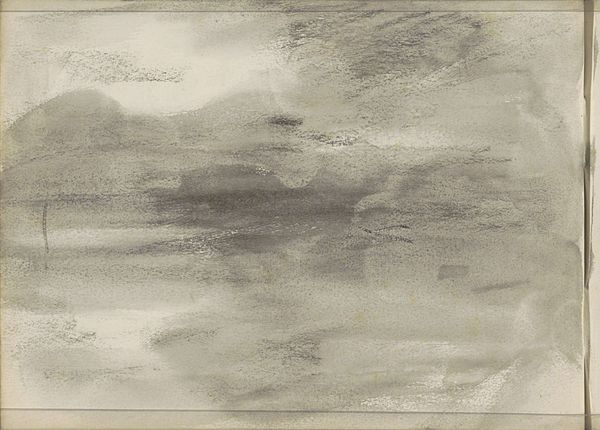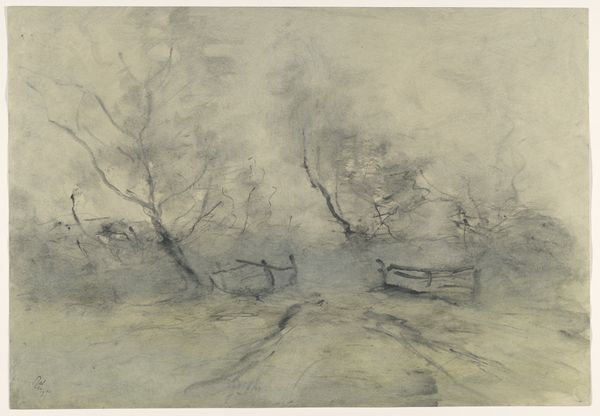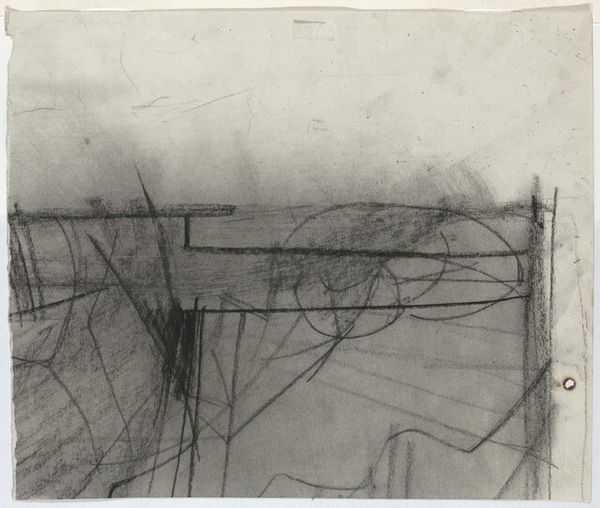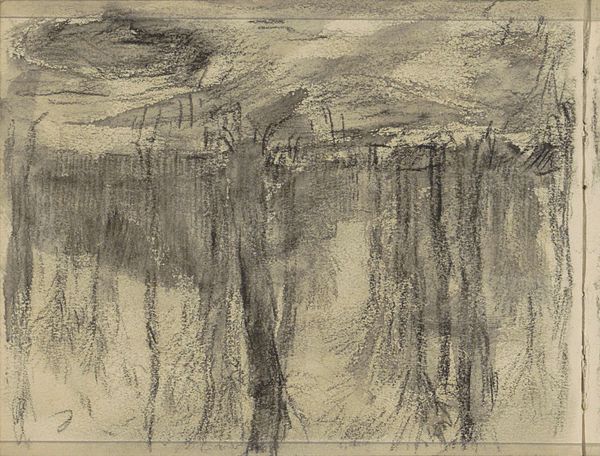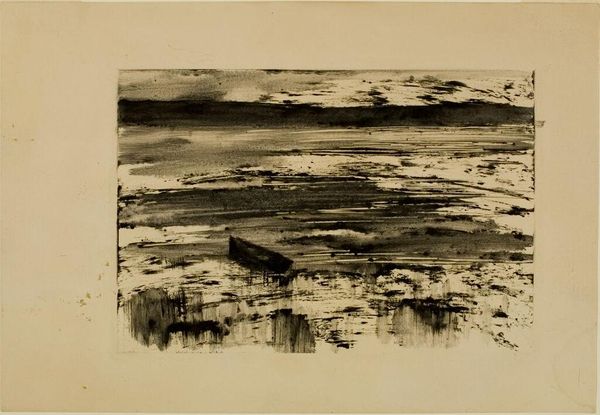
Copyright: Lyonel Feininger,Fair Use
Editor: We’re looking at Lyonel Feininger's "Mystic River," created in 1951 using ink and watercolor on paper. It evokes a really quiet, almost haunting, atmosphere with all these delicate lines and muted tones. What strikes you most about the visual elements here? Curator: Note how Feininger has composed this landscape, seemingly fracturing the scene into geometric shards, yet it coalesces into a unified vista. Observe how line dominates – an insistent, almost architectural structure is laid over a softer wash of color. Consider the effect this has on your perception. Do you perceive depth? Or is the scene flattened, abstracted? Editor: I think it does both! There’s definitely depth with the dark horizon line, but the vertical lines disrupt that, making it feel a bit like looking at a reflection in broken glass. Curator: Precisely. The strategic use of line prevents complete perspectival immersion. This constant play between the representational and the abstract is fundamental. Notice, too, how the limited palette—primarily grayscale with subtle earth tones—contributes to the somber mood. The very materiality, the contrast between the sharp, deliberate ink and the fluid, almost ethereal watercolor is essential in considering it's construction. Editor: It’s interesting how such a simple composition can be so complex. It seems every element, every line, contributes to the overall feeling of quiet mystery. Curator: Indeed. It encourages close looking and an appreciation for the formal relationships at play. Line, color, composition – these are the artist’s primary tools. Editor: I definitely see how a formalist lens really helps unpack the construction and intention within this work. Thank you! Curator: A rewarding exploration indeed. Looking closely reveals the complex structure beneath apparent simplicity.
Comments
No comments
Be the first to comment and join the conversation on the ultimate creative platform.
